The Secret Lives of Mushrooms
Images courtesy of Jenkins Arboretum & GardensTake a closer look at fungi this summer
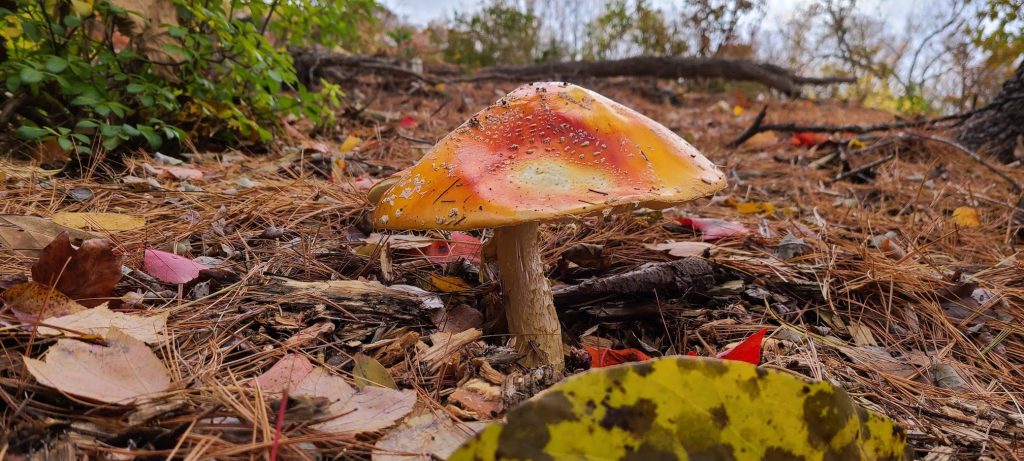 After a rainstorm, the forest floor silently begins to change. Small, strange shapes push through the damp duff and leaf litter. The wrinkled orange “tentacle” of a stinky squid mushroom (Pseudocolus fusiformis) reaches up from the woodchip mulch. Nearby, the red cap of an amanita stands like a storybook toadstool, white-spotted and proud. On the trunk of an old oak, turkey tail (Trametes versicolor) grows in dense, sunlit clusters of striped shelves.
After a rainstorm, the forest floor silently begins to change. Small, strange shapes push through the damp duff and leaf litter. The wrinkled orange “tentacle” of a stinky squid mushroom (Pseudocolus fusiformis) reaches up from the woodchip mulch. Nearby, the red cap of an amanita stands like a storybook toadstool, white-spotted and proud. On the trunk of an old oak, turkey tail (Trametes versicolor) grows in dense, sunlit clusters of striped shelves.
These are the quiet guests we find at Jenkins Arboretum & Gardens: fungi. Though they may only last a day or two, their sudden appearance signals something special happening beneath our feet. Fleeting but welcome, mushrooms are signs of a thriving ecosystem, enhancing plant growth, resilience and balance.
Fungal Network
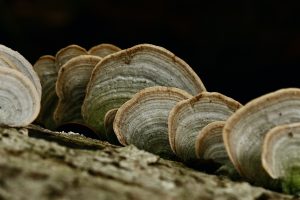
What we see above ground is just one small part of an interwoven and ever-expanding story of fungi. The visible mushrooms popping through the forest floor are the fruiting bodies of a much larger organism. Below the soil, thin threads called mycelium stretch and spread, forming an underground web known as the mycorrhizal network. Through this network, fungi facilitate the exchange of nutrients and water between linked plants, especially during times of stress, such as summer droughts.
As the fungal network weaves outward, it improves soil stability, air flow and moisture retention. All the while, fungi slowly decompose organic matter like dead trees and leaves, recycling nutrients back into the soil.
Fungi provide an ecosystem service few other things can: breaking down dead wood to release the nutrients locked inside. Wood is a treasure trove of essential minerals, trapped in a network of tough cellulose and lignin. Hardly anything can digest cellulose and lignin — but fungi can and do!
By digesting dead wood, fungi kickstart the process of returning essential nutrients to the soil. It’s a quiet but powerful teamwork that helps the whole forest stay healthy.
Fungi at Jenkins
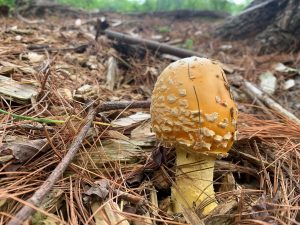 At Jenkins Arboretum & Gardens, our organic-rich gardens depend on the work of these mostly hidden partners. In turn, our horticulture team gardens in a way that intentionally supports fungi. We minimize soil disturbance as much as possible and let nature do the heavy lifting.
At Jenkins Arboretum & Gardens, our organic-rich gardens depend on the work of these mostly hidden partners. In turn, our horticulture team gardens in a way that intentionally supports fungi. We minimize soil disturbance as much as possible and let nature do the heavy lifting.
We also embrace a naturalistic look to our gardens, celebrating the beauty of plants in all four seasons, never rushing to cut back or tidy up after plants go dormant. You can do the same at home: plant native species, mulch with compost or leaves, and let fallen logs decompose where they land. With the right mix of shade, moisture and organic matter, fungi will find a place in your yard — and will return the favor by improving it!
Tune in to Fungi
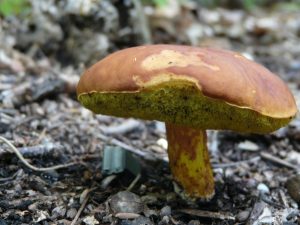 With over 7,000 species in Pennsylvania alone, Kingdom Fungi poses an exciting opportunity to observe a wide variety, and summer can be a great time to see these hard-working fungi up close. Warm, wet weather after a storm often brings many kinds of mushrooms to life.
With over 7,000 species in Pennsylvania alone, Kingdom Fungi poses an exciting opportunity to observe a wide variety, and summer can be a great time to see these hard-working fungi up close. Warm, wet weather after a storm often brings many kinds of mushrooms to life.
Next time you visit Jenkins or another garden, take your time to observe the quietest visitors. Look beside logs, near stones or at the base of trees. Once you tune your eyes to notice our fungal friends, you’ll start to see the diverse shapes, colors and sizes popping up all across forest floor.
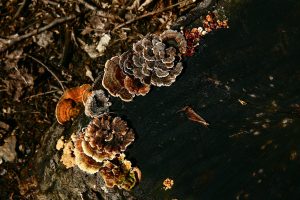
Mushrooms may be fleeting, but their presence reveals a hidden world teeming with life and connection. These fascinating fungi are more than just curious forest decorations — they’re essential players in the health of our ecosystems, quietly recycling nutrients, supporting plant life and sustaining the soil beneath our feet.
When observing fungi, just remember: not all mushrooms are safe to touch or eat. Some look very similar to each other, and some are toxic if eaten. It’s always best to admire mushrooms with your eyes, not your hands.
At Jenkins Arboretum & Gardens, we celebrate the vital role of fungi and invite you to do the same in your own backyard. So next time the summer rains fall, take a closer look at the forest floor. You just might uncover one of nature’s most extraordinary partnerships, quietly at work.
More Fun with Fungi
If you’re curious to learn more, many local organizations have educational opportunities focused on fungi. This August at Jenkins, they’ll partner with the Philadelphia Mycology Club to host a Summer Fungi Walk in the gardens as well as a virtual talk exploring Fungal Ecology in Greater Philadelphia. In September they’ll celebrate the beauty of fungi with a sketching class: The Mushroom Forager’s Sketchbook. Information about these programs — and more — can be found on Jenkins’ website.
Jenkins Arboretum & Gardens is a 48-acre public garden showcasing native flora of the eastern United States and a world-class collection of rhododendrons and azaleas. The gardens are open every day of the year and are always free of an admission fee. Plan your visit by visiting JenkinsArboretum.org.
Our Favorite Resources
- B&D Builders
- Ball & Ball
- Berk Hathaway Holly Gross
- Berk Hathaway Kit Anstey
- Berk Hathaway M. Schwartz
- Canvas Valley Forge
- Dewson Construction
- DiSabatino Landscaping
- King Construction
- McComsey Builders
- Monument/Sotheby’s Int’l
- Mostardi Nursery
- Mountaintop Construction
- Renewal Dynamics
- Sheller Energy
- White Horse Construction
